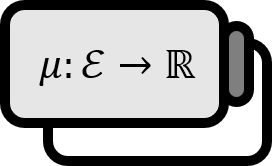Methods for Expressing the Absolute Value of an Arbitrary Function as Two Non-negative Functions
Theorem
Basic
The absolute value $|f|$ of the function $f : X \to \mathbb{R}$ is represented with respect to the positive part $f^{+}$ and the negative part $f^{-}$ as follows. $$ |f| = f^{+} + f^{-} $$
Advanced
Let’s say the function $g : X \to \mathbb{R}$ is almost everywhere $g \ge 0$.
- [1] Inside the absolute value: $$ f^{+} = |f^{+}| \\ f^{-} = |f^{-}| \\ |f| = |f^{+}| + |f^{-}| $$
- [2] Outside the absolute value: $$ |f|^{-} = 0 \\ |f|^{+} = |f| \\ |f| = |f|^{+} + |f|^{-} $$
- [3] Entering and exiting signs: $$ |f^{+}| + |f^{-}| = |f|^{+} + |f|^{-} \\ |g^{-}| = |g|^{-} = 0 \qquad \text{ a.e.} \\ |g^{+}| = |g|^{+} = g \qquad \text{ a.e.} $$
Description
The expression of the absolute value of a function is directly derived based on the definition of the positive and negative parts, especially when it is used in real analysis. Let’s become proficient in using these useful properties.
The mention of inside and outside the absolute value, and entering and exiting signs are just for ease of viewing and understanding; there isn’t an official naming for them. These properties are also proven straight down from the top, according to the definition of positive and negative parts and absolute value.
